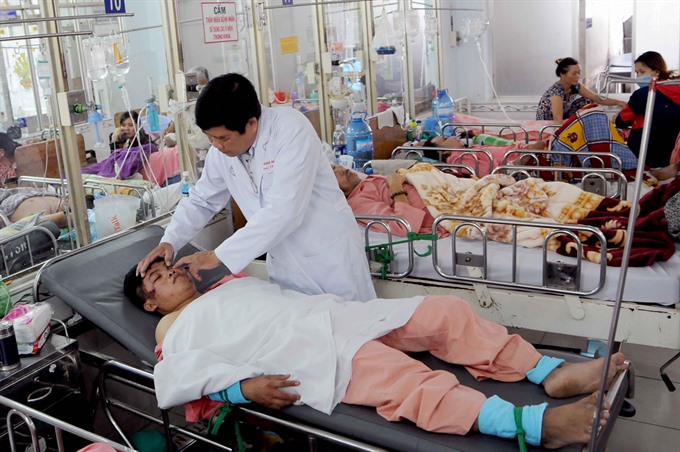 Society
Society

The HCM City Department of Health has instructed general hospitals to improve emergency aid treatment in an aim to reduce overcrowding at the city’s Chợ Rẫy Hospital.
 |
| Patients are treated at Emergency Department in Chợ Rẫy Hospital in HCM City. The hospital treated 28,000 patients with emergency aid in the first quarter of this year, including 14,455 from the city’s district-level hospitals. — VNA/VNS Photo An Hiếu |
HCM CITY — The HCM City Department of Health has instructed general hospitals to improve emergency aid treatment in an aim to reduce overcrowding at the city’s Chợ Rẫy Hospital.
These so-called first-category hospitals are health facilities with highly professional staff, specialised departments and modern medical equipment and facilities.
The hospitals include Gia Định People’s Hospital, Nguyễn Tri Phương Hospital, 115 People Hospital and Trưng Vương Hospital, among others.
The hospitals have been told to develop specialised treatment for serious burns, multiple organ failure and snake bites.
Last year, general hospitals were required to set up one ward for treatment of stroke, as required by the Health Ministry.
Patients with serious diseases and conditions needing emergency aid are often brought to Chợ Rẫy Hospital from province- or district-level hospitals in the city and other southern provinces.
At a meeting held last Friday to review medical treatment in the first quarter, Dr Phạm Thị Ngọc Thảo, deputy director of Chợ Rẫy Hospital, said the hospital treated 28,000 patients with emergency aid in the first quarter, including 14,455 from the city’s district-level hospitals.
During holidays or Lunar New Year (Tết), the hospital’s emergency aid department was overcrowded, Thảo said. The department has the capacity to perform 150 surgeries a day, but around 30 patients usually have to wait because of overcrowding.
Many of them wait for up to 12 hours, but still cannot be served, she said, adding that the risk was too high for some patients.
Of district-level hospitals, Củ Chi District Hospital has the highest number of patients transferred to Chợ Rẫy Hospital, according to the Department of Health.
Dr Hồ Hải Trường Giang, director of Củ Chi District Hospital, said that patients taken to Chợ Rẫy Hospital had serious brain injuries or coronary problems that cannot be treated by doctors at his hospital.
He said that relatives often ask doctors to transfer the patient to Chợ Rẫy Hospital because they trust the doctors there.
Chợ Rẫy Hospital’s doctors, however, have told Củ Chi District Hospital not to transfer patients.
In a related matter, deputy director of the Department of Health, Tăng Chí Thượng, said that HCM City Orthopaedics and Trauma Hospital should develop a ward for brain injuries.
In addition, hospitals, especially district-level, should co-operate with higher-level hospitals to carry out emergency aid called Red Alerts to avoid transfers.
In the procedure, emergency ward doctors can evaluate the patient’s condition and then activate a Red Alert to seek help from doctors at another hospital, he said.
Doctors at Chợ Rẫy Hospital and University Medical Centre are ready to provide assistance for doctors at lower-level hospitals, Thượng said. —VNS




